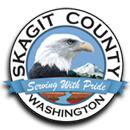|
Skagit
County Ag-Critical Areas Ordinance
Washington counties are required by state law to designate and protect
critical areas-wetlands, aquifer recharge areas, fish and wildlife habitat
conservation areas, frequently-flooded areas, and geologically-hazardous
areas. Preventing stream pollution is critical for downstream recreation
and shellfish farming. Fish and wildlife habitat areas and wetlands are
especially important to healthy salmon and endangered Orca whale populations.
Some counties have chosen to protect these critical areas using mandatory
buffers-strips of land bordering the critical area where farming is not
allowed-but Skagit County has taken a different approach.
Skagit County protects critical areas in areas of agricultural activity
in the following ways:
- If the land is
zoned Ag-NRL or RRc-NRL and the agricultural activity qualifies as "ongoing
agriculture" pursuant to the definition in Skagit
County Code 14.04.020:
- the ag activity
is exempt from the standard buffer requirements;
- the ag activity
must "not harm or degrade" critical areas (SCC
14.24.120(3)); and
- the ag activity
must comply with specified Watercourse Protection Measures
(SCC 14.24.120(4)).
- If the land is
zoned Ag-NRL or RRc-NRL and the agricultural activity does not qualify
as "ongoing agriculture," the County's standard critical areas
ordinance applies. See SCC 14.24.
- In all other areas,
the County's standard critical areas ordinance always applies.
- In all zones, the
County also protects critical areas in areas of agricultural activity
through the Voluntary
Stewardship Program. Even with adoption of the Voluntary
Stewardship Program, agriculture is subject to the County's Critical
Areas Ordinance as described above.
Skagit County updated
its Ag-Critical
Areas Ordinance in December 2011.
No
Harm or Degradation
Skagit County Code
14.24.120(3) requires agricultural activities to:
- Comply with the
state water pollution control laws;
- Comply with the
requirements of any total maximum daily load water quality improvement
projects established by the Department of Ecology ;
- Comply with the
State Hydraulics Code and Hydraulics Code Rules (RCW 77.55 and WAC 220-110);
- Comply with the
Watercourse Protection Measures described below;
- Not significantly
degrade fish habitat below baseline levels.
Watercourse
Protection Measures
Our Ag-CAO establishes
some simple standards that are designed to protect streams and wildlife
habitat from pollution, runoff, and degradation. If we want to keep our
flexible system and avoid one-size-fit-all buffers, it's important we
follow these common-sense rules. Read below, or download
our Watercourse Protection Measures brochure (663kb PDF).
LIVESTOCK
- Keep livestock
out of the water. Livestock access to watercourses must be limited to
only the amount of time necessary for watering or crossing. Watering
facilities or access must be constructed consistent with NRCS standards.
NRCS does not allow water gaps on impaired streams.
- Keep waste or sediment
out of the water. You must conduct your livestock or dairy operations
without contributing waste or sediment in violation of state water quality
standards.
- Keep your pasture
vegetated. Maintain enough cover sufficient to avoid contributing sediment
to watercourses. Avoid overgrazing near waterways.
NUTRIENTS AND FARM
CHEMICALS
- Keep manure out
of the water. You may not put manure anywhere it is likely to be carried
into a watercourse. Between October 31 and March 1, you may not spread
manure within 50 feet of a watercourse, or anywhere on bare ground (unless
permitted by a dairy nutrient management plan or other limited conditions).
- Keep nutrient levels
appropriate. Don't over apply nutrients, so that the amount that passes
through the soil below where they are used by plants is minimized.
- Apply chemicals
consistent with all label requirements.
SOIL EROSION AND
SEDIMENT CONTROL
- Design roads and
structures to avoid contributing sediment.
- Keep agricultural
equipment from causing bank sloughing or other failures. Don't operate
equipment too close to the watercourse.
- Wherever possible,
construct V-ditching only to drain into watercourses that don't contain
fish. Always avoid contributing excess amounts of sediment to the watercourse.
AGRICULTURAL DRAINAGE
INFRASTRUCTURE
- Conduct regular
maintenance between June 15 and October 31. This work window is best
for fish. Some exceptions may apply.
- Keep excavation
spoils away from the bank. Prevent bank failures and ensure drainage
from spoils won't contribute sediment.
- Ensure mowing doesn't
disturb soil or sediments. Ensure that the cut vegetation does not block
water flow.
Technical
Assistance Available
Skagit
Conservation District and other entities are available to assist agricultural
operators with farm and resource management. Learn more at our Voluntary
Stewardship Program webpage.
|




















